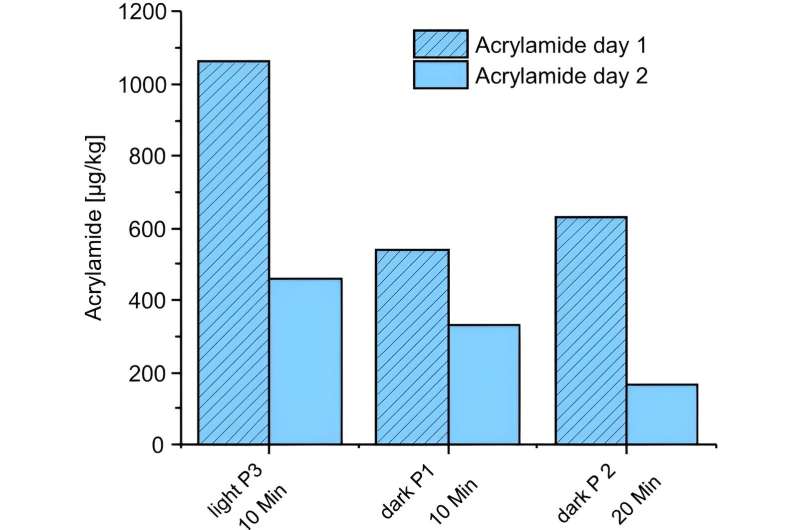This article has been reviewed according to Science X's editorial process and policies. Editors have highlighted the following attributes while ensuring the content's credibility:
fact-checked
proofread
New research sheds light on food borne toxicants in coffee

Coffee is one of the world's most popular beverages, but it also has potential health concerns. One such issue is the production of foodborne toxicants such as acrylamide and furan during roasting process. Therefore it is worth to evaluate mitigation options for both contaminants in coffee by changing roasting parameters, including special procedures.
Beverage Plant Research published an online paper entitled "Food borne toxicants in coffee: Acrylamide and furan derivative content in Arabica and Robusta coffees with different roasting profiles and varying degrees of roast."
This study analyzed a Vietnam Robusta grade 2 and a Brazil Arabica (unwashed) coffee with different roasting profiles (tangential, drum and hot air roasting) and roast degrees (light, medium and dark roast). Researchers accurately measured the acrylamide and furan derivative content in the samples by GC-MS.
They found that acrylamide contents were highest in light roasts, and the content of furan and methylfurans were low in light roasts for both the Robusta and Arabica samples. In addition, the study also explored the impact of special roasts, such as double roast or roasting with a sudden temperature change on acrylamide and furan content.
The results showed that special roasts had no significant effect on the two contaminants. To sum up, these findings suggest that the coffee type and roasting process significantly influence the levels of these toxicants. Simultaneous mitigation of the effects of acrylamide and furan/methylfuran by changing the roasting parameters is not possible.
In conclusion, the research results show that both the type of coffee and its roasting profile have a substantial impact on the levels of acrylamide and furan, highlighting the possibility of regulating these toxicants through controlled roasting processes. However, simultaneous mitigation of these toxicants seems to be impossible. This study holds significant implications for the future of coffee production, potentially paving the way for safer and healthier consumption practices.
More information: Ulrich H. Engelhardt et al, Food borne toxicants in coffee: Acrylamide and furan derivative content in Arabica and Robusta coffees with different roasting profiles and varying degrees of roast, Beverage Plant Research (2023). DOI: 10.48130/BPR-2023-0008
Provided by Maximum Academic Press




















